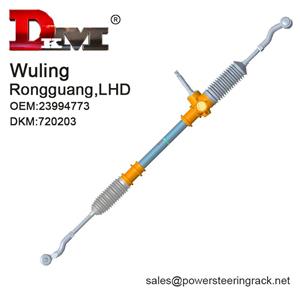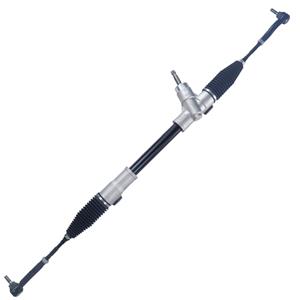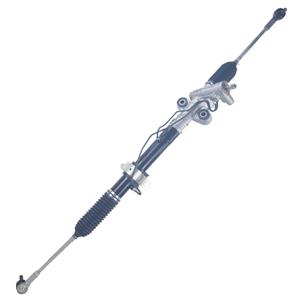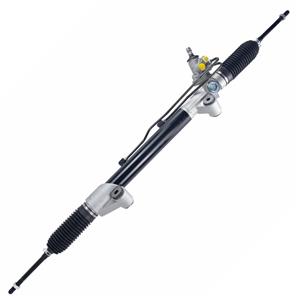What is a power steering pump?
In modern cars, the power steering system is an indispensable part, which greatly reduces the driver's steering burden and makes driving easier and safer. As the core component of the power steering system, the power steering pump is of great importance.
So, what is a power steering pump? How does it work? What impact does it have on vehicle performance? This article will explore these issues in depth to help you better understand this key component.

What is a power steering pump?
A power steering pump is a device specifically used to provide hydraulic power to a vehicle's power steering system. Its main function is to convert the engine's mechanical energy into hydraulic energy, and through the flow and pressure of hydraulic oil, the auxiliary steering system reduces the force required by the driver to turn the steering wheel.
In short, when you turn the steering wheel while driving, the power steering pump automatically starts and provides the necessary hydraulic assistance, making the steering operation easier. This is especially important when driving at low speeds, parking or turning, because steering in these situations requires greater force, and the presence of a power steering pump makes this process smoother.
How does a power steering pump work?
The working principle of the power steering pump can be divided into several key steps:
1. Driving power source: The power steering pump is usually driven by the engine through a belt. When the engine is started and running, the power is transmitted to the steering pump through the belt to start the operation.
2. Circulation of hydraulic oil: There is a rotating impeller device inside the power steering pump. When the impeller rotates, it creates a vacuum, which sucks the hydraulic oil from the oil tank into the pump. The pump then pressurizes the hydraulic oil and delivers it to the power steering rack or power steering box through a high-pressure pipeline.
3. Pressure regulation: In order to ensure that the hydraulic system can provide appropriate power assistance under different driving conditions, a pressure regulating valve is usually installed in the power steering pump. This valve can automatically adjust the pressure of the hydraulic oil according to the needs of the steering system to provide appropriate power assistance.
4. Hydraulic power transmission: When the driver turns the steering wheel, the hydraulic oil pushes the piston in the power steering system under high pressure to assist the steering of the front wheels. This process greatly reduces the amount of force the driver needs to apply, making the steering operation easier.
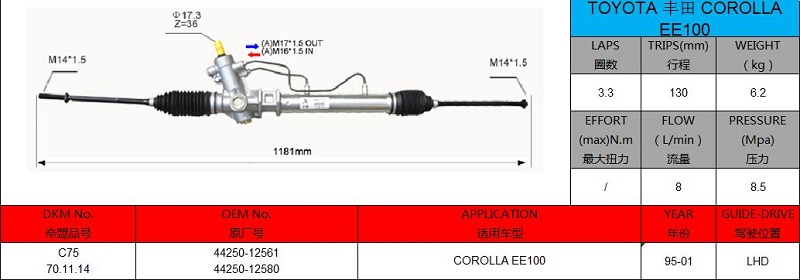
What are the main types of power steering pumps?
There are three common types of power steering pumps: gear pumps, vane pumps, and plunger pumps. Their working principles and performance vary, and they are described below.
1. Gear pump: The gear pump is the most common type of power steering pump. Its working principle is based on a pair of meshing gears. When the gears rotate, the hydraulic oil is compressed and pressurized by the gear teeth, and then flows to the steering system through the outlet. Gear pumps are widely used in many car models because of their simple structure, low manufacturing cost, and good durability.
2. Vane pump: There is a set of sliding vanes in the vane pump. When the pump's rotor rotates, the vanes cling to the inner wall of the pump body under the action of centrifugal force, forming small chambers. These small chambers gradually become smaller as the rotor rotates, thereby compressing the hydraulic oil and pressurizing it. The advantages of vane pumps are smooth operation and low noise, but their structure is relatively complex and the manufacturing cost is also high.
3. Plunger pump: The plunger pump is an efficient power steering pump that uses multiple reciprocating plungers to compress and pressurize the hydraulic oil. Plunger pumps are often used in high-performance vehicles or steering systems that require high-pressure hydraulic assistance because they can provide very precise hydraulic control at high pressure. However, plunger pumps are relatively rare in ordinary vehicles due to their high manufacturing costs and complex maintenance.
What is the role and importance of power steering pumps?
The power steering pump plays a vital role in the power steering system of the car. Its role is not only to provide hydraulic assistance, but also directly affects the vehicle's handling and driving comfort. The following are the important effects of the power steering pump on vehicle performance:
1. Reduce the driver's burden: The primary role of the power steering pump is to reduce the driver's steering burden, making it easy to turn the steering wheel at low speed or stationary. This is particularly significant in urban driving and parking lots, where the driver no longer needs to apply a lot of force to steer, thereby improving driving comfort and convenience.
2. Improve controllability: By providing hydraulic assistance, the power steering pump can significantly improve the vehicle's controllability. Especially when driving at high speeds, the system can provide moderate assistance, making the steering operation smoother and more precise, and enhancing the overall controllability of the vehicle.
3. Ensure driving safety: In complex road conditions, such as sharp turns or avoiding obstacles, the power steering pump can quickly provide the required power, helping the driver to better control the vehicle, thereby improving driving safety.
4. Extend the life of the steering system: Thanks to the hydraulic power of the power steering pump, the load on the mechanical components in the steering system is reduced, thereby extending the service life of the entire system. In addition, the pressure regulation function of the power steering pump can effectively prevent overpressure in the hydraulic system and avoid system damage.

Maintenance and care of power steering pump
Since the power steering pump is one of the core components of the automotive power steering system, its normal operation is directly related to the vehicle's handling and safety. Therefore, regular maintenance and care are essential. The following are several key maintenance recommendations for the power steering pump:
1. Check the hydraulic oil regularly: The power steering system relies on hydraulic oil to transmit power, so it is very important to ensure the quality and amount of hydraulic oil. Check the oil level and color of the hydraulic oil regularly. If the level is too low or the oil changes color, the hydraulic oil should be replenished or replaced in time. In addition, choosing the right type of hydraulic oil can also extend the service life of the pump.
2. Pay attention to the sound of the pump: The power steering pump should run smoothly and make less noise when working normally. If you hear unusual noises or increase the noise when steering, it may be a sign of wear of parts in the pump, insufficient hydraulic oil or pipeline leakage, which needs to be checked and repaired as soon as possible.
3. Check the belt tension: The power steering pump is usually driven by the engine belt, so the belt tension is crucial to the normal operation of the pump. A belt that is too loose will cause the pump to not provide enough power, and a belt that is too tight may damage the bearings or other internal components of the pump. Check and adjust the belt tension regularly to ensure that it is at the appropriate tightness.
4. Avoid long-term overload operation: Although the power steering pump can provide strong power, long-term overload operation will accelerate the wear of the pump. Therefore, during driving, try to avoid operating the steering system under extreme conditions for a long time, such as frequent sharp turns or long-term low-speed driving.
5. Regularly replace the hydraulic filter element: The hydraulic system is usually equipped with a filter element to filter impurities in the hydraulic oil to protect the power steering pump and other hydraulic components from wear. Regular replacement of the filter element can effectively extend the service life of the pump and ensure the smooth operation of the steering system.

Common faults and treatments of power steering pumps
Although the power steering pump is well designed, some common faults may still occur during long-term use. Understanding the manifestations of these faults and how to deal with them will help to eliminate the problem in time and avoid more serious damage.
1. Difficult steering: If you find that steering becomes difficult while driving and you need to apply more force, it is likely that there is insufficient hydraulic oil or a problem with the power steering pump. First, check the hydraulic oil level. If the oil level is normal, you may need to further check the working condition of the pump or whether there is a leak in the hydraulic line.
2. Hydraulic oil leakage: Hydraulic oil leakage usually manifests itself as a drop in the oil level in the steering system or oil stains on the bottom of the vehicle. Leaks may come from damaged seals of the power steering pump, ruptured hydraulic lines, or loose joints. The source of the leak should be found and repaired as soon as possible to avoid causing greater losses.
3. Abnormal steering noise: If the power steering pump makes abnormal noises during operation, such as squeaking or humming, it may be caused by wear of the impeller in the pump, insufficient hydraulic oil, or air entering the hydraulic system. This situation needs to be checked and repaired as soon as possible to avoid further damage to the pump.
4. Steering pump overheating: The power steering pump may overheat under long-term high-load operation. This situation is usually caused by poor hydraulic oil quality, air in the hydraulic system or poor cooling effect of the pump. The working status of the pump should be tested in time, the condition of the hydraulic oil should be checked, and necessary cooling measures should be taken.

